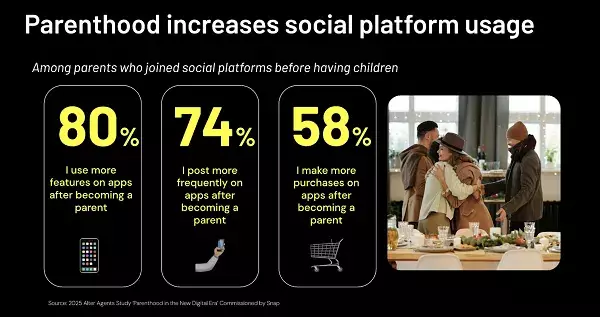The relationship between parenthood and social media usage challenges conventional wisdom that such life changes diminish online activity. Many assume that once individuals become parents, their social media presence diminishes as they focus on their children and manage busier schedules. However, a closer examination reveals a more intricate narrative: parenthood acts as a catalyst rather than a deterrent to social media engagement. This shift stems from the evolving nature of digital connectivity, where platforms serve not just as personal outlets but as vital tools for parenting, shopping, and community building. Modern parents often leverage social media to document milestones, share parenting experiences, and seek support in a realm that was less accessible before the digital age.
This dynamic underscores a fundamental truth: social media has become an embedded part of the parenting journey. It facilitates a sense of community, offers instant access to advice, and creates shared spaces for both support and discovery. Rather than reducing usage, becoming a parent refines and expands the ways individuals interact with digital platforms, emphasizing the importance of social media as a resource and a connector.
Moments of Increased Engagement: Lifestyle and Consumer Habits
Data from recent studies, including those from Snapchat in partnership with Havas Media Network, illuminate compelling patterns in parental social media behavior. Notably, a majority—59% of parents worldwide—report increased usage following the arrival of a child. This surge isn’t coincidental; it reflects the multifaceted roles social media plays in parental life. During holidays, birthdays, and especially summer vacations, sharing experiences becomes a way to connect with friends and family, preserve family memories, and celebrate milestones, intensifying engagement.
Yet, what stands out is the spike during Black Friday, traditionally a major shopping event. This increase isn’t just about leisure browsing but indicates a strategic utilization of social media for shopping insights. Parents increasingly turn to platforms to research products, compare options, and even co-discover items alongside children. Their use of social media becomes a collaborative shopping experience, embedding digital tools into daily decision-making processes. Parents are influenced not only by traditional advertising but also by their children’s inputs—particularly from teenagers—further blurring the lines between parental authority and peer-like influence.
This behavior exemplifies a shift from passive content consumers to active participants in a shared digital marketplace. Such collaboration reflects more than just convenience; it signals a transformation in how family decisions are made in the digital age.
The Co-Discovery Culture: Shopping and Beyond
Incorporating children into the social media experience goes beyond shopping. It encapsulates a broader cultural shift towards shared digital exploration. Kids today grow up immersed in social media, often influencing their parents’ choices indirectly through their own browsing and sharing habits. Parents, in turn, seek to understand and engage with their children’s digital worlds, creating a feedback loop of influence that strengthens family bonds through shared online activity.
Marketers and brands must recognize this evolution. Effective advertising now involves timing campaigns during moments of high engagement—such as after school, weekends, and seasonal events—when families are more likely to be browsing together. The concept of “co-discovery” opens opportunities for targeted messaging, creating authentic touchpoints where brands can resonate with both parents and their children simultaneously.
Moreover, the influence of social media on purchasing decisions has expanded across diverse product categories, from toys to travel, electronics to apparel. Children’s exposure to ads and peer recommendations on social platforms significantly shape parental choices, emphasizing the importance of an integrated, family-centric marketing approach. Understanding these behavioral patterns isn’t just beneficial for advertisers; it offers a nuanced lens into how digital relationships are transforming traditional family dynamics.
Implications for Future Digital Parenting Strategies
As social media continues to evolve into a central hub of family life, it’s imperative for brands, content creators, and platform developers to adapt. The key lies in recognizing that social media is no longer merely a tool for personal expression but a shared space that influences behaviors, relationships, and purchasing decisions within families. Strategies that respect this interconnectedness—by creating content that fosters communal discovery, supports parental guidance, and resonates with the digital-savvy younger generation—will be most successful.
Furthermore, there’s an inherent responsibility for platforms to facilitate safe, positive, and enriching interactions tailored to family audiences. This includes safeguarding privacy, promoting healthy online habits, and providing meaningful, age-appropriate content. The future of social media as a parental tool isn’t just about engagement metrics; it’s about nurturing supportive digital environments that enhance family bonds and empower informed choices.
Parenthood acts as a catalyst for more engaged, purpose-driven social media activity. It morphs platforms from casual entertainment sources into essential avenues for connection, education, and consumer influence. As this digital evolution unfolds, understanding the sophisticated ways families navigate social media will be crucial, not only for marketers but for the platforms shaping the future of digital family life.

